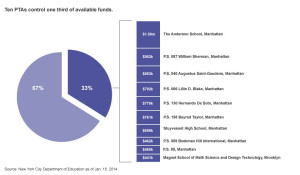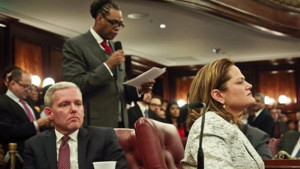When you need a pothole fixed, where do you call?
What about an intolerably noisy neighbor?
When faced with civic adversity, most New Yorkers know to grab their cell phones and dial 311.
But for more complicated issues, the aggrieved turn to the Office of the New York City Public Advocate, which until the end of the year remains occupied by mayor-elect Bill de Blasio.
New statistics released by de Blasio’s office to the City Council show that in the year through June 30, de Blasio’s office fielded nearly 14,000 calls, covering not only questions about city agencies but FEMA aid following Sandy, labor law violations and much else beyond the reach of 311’s operators.
Critics have for years called to abolish the public advocate’s office, citing among other reasons the advent of 311, the city-run information system that fieldednearly 1.7 million calls a month last year.
Eight staff members are currently devoted to the Constituent Services Unit, which fields the calls at 212-669-7250 or GetHelp@pubadvocate.nyc.gov. Of the 13,691 complaints and inquiries the Public Advocate received in 2012-’13, it marked as “resolved” 8,305.
Those included hundreds of calls about the New York City Housing Authority, which has suffered a notorious backlog of repair orders from tenants and was the most common target of calls to the public advocate. Aggrieved MTA customers found a place to call, as did more than a thousand individuals seeking assistance with city-administered welfare benefits.
In fact, the public advocate’s office saw more calls in 2012-’13 than it did back in 1994, in the pre-311 era, when Public Advocate Mark Green first took complaints from constituents, as required by the City Charter. That year, his office fielded 10,162 calls.
Aiming to serve as an ombudsman and “citizen defender,” Green announced that his office aimed to be the best “bargain in town,” at a self-reported cost of 30 cents per resident. (The recent $13 million run-off election between Public Advocate–elect Letitia James and rival Daniel Squadron might warrant a reconsideration of the price tag.)
The advocate’s Constituent Services Unit has in the past been more popular; it received nearly 17,000 inquiries in 1998, five years before the advent of 311. That number dropped to about 12,000 by 2009, as documented by then–Public Advocate Betsy Gotbaum in an annual report, which the City Charter requires the Public Advocate send to the City Council annually by the end of October.

A bearded Bill de Blasio at his 2010 inauguration as public advocate. AP Photo/Henny Ray Abrams
After that, the picture gets hazier. Neither the public advocate’s office nor the City Council has made previous editions of its annual report available to The New York World, and none have been posted on the public advocate’s website.
“That is a document we submit to the City Council,” said a spokesperson for the public advocate’s office, “because that’s the audience it’s intended for.” He added that the public advocate sought to put as much information as possible online before de Blasio’s term wraps up at the end of December.









